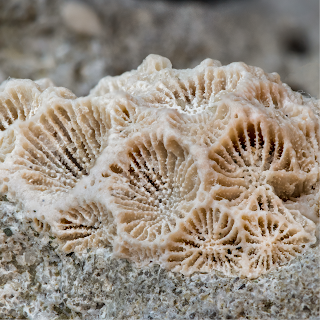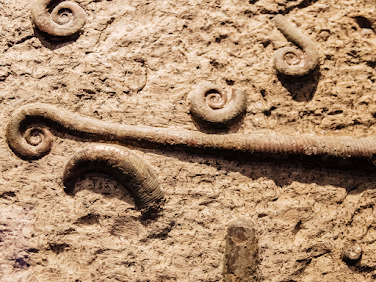 |
| Cannibalistic Comb Jellies |
Ctenophores or comb jellies are one of the phylogenetically most important and controversial metazoan groups. They are not jellyfish and are not closely related, though they do share some characteristics with the gelatinous members of the subphylum Medusozoa.
Comb jellies are not picky eaters. Their tastes range to what is at hand, including cannibalizing other comb jellies. They will feast on their kin along with tasty plankton, zooplankton, crustaceans and wee fish.
Interest in their fossil record has been catalysed by spectacularly preserved soft-bodied specimens from Cambrian Lagerstätten of the 518-million-years-old Chengjiang Biota, the 505-million-years-old Burgess Shale and other Burgess Shale-like deposits.
We find them in the Late Devonian Escuminac Formation at Miguasha National Park, Quebec, Canada — a UNESCO world heritage site famous for its abundance of well-preserved vertebrate fossils including most major evolutionary groups of Devonian lower vertebrates from jawless fish to stem-tetrapods.
Based on morphological similarities of this Canadian fossil with stem-ctenophore fossils from the Cambrian Lagerstätte of the Chinese locality Chengjiang, they have been assessed for their affinity to stem-group ctenophores (dinomischids, Siphusauctum, scleroctenophorans) and early crown-group ctenophores. Modern ctenophores and many fossil forms lack mineralized hard parts, which renders the rare fossils that have been extracted from several Lagerstätten quite remarkable.
Like the soft bodies of jellyfish and the polyps of hydrozoans and anthozoans, the probability for such soft bodies (or body regions) to become fossilized is extremely low. In spite of this low preservation potential, remains of stem-ctenophores have become known from several Cambrian and younger conservation deposits, and with even older candidate ctenophores in the Ediacaran.
While Cambrian Lagerstätten have yielded several genera, ctenophore remains are much rarer in the Devonian; in particular, two studies, describing material from the German Hunsrück Slate.
 |
| Bioluminescent Comb Jellies |
The most basal stem ctenophores are the dinomischids: sessile benthic petaloid invertebrates, many of which are equipped with a stalk. This group first was described from the Middle Cambrian Burgess Shale. Based on the genus Dinomischus, these early stalked forms were commonly called ‘dinomischids’.
Zhao et al. shared that dinomischids "form a grade in the lower part of the ctenophore stem group” and include taxa such as Xianguangia, Daihua, and Dinomischus that have hexaradiate-based symmetry (e.g., sixfold, 18-fold).
Some later, skeletonised stem-ctenophores were termed ‘Scleroctenophora’; ‘scleroctenophorans’ have a shorter stalk, lack the ‘petals’ and have no bracts and might be monophyletic.
To date, all known dinomischids and scleroctenophorans are Cambrian. Remarkably, analysis of the material described here suggests it is a very late-surviving member of this part of the ctenophore tree, occurring in strata over a hundred million years younger with no intervening known record, thus making it a Lazarus taxon with an extensive ghost lineage.
Palaeozoic sediments yield a growing number of fossil invertebrates with radial symmetries, some being quite enigmatic with body plans differing radically from those of extant organisms.
The morphological similarities to Cambrian forms and the mix of characters regarding overall shape and symmetries render this discovery important. The aims of this study are to describe the only known specimen of this Devonian ctenophore, discuss its phylogenetic and systematic position, and the impact of fossil data for ctenophore affinities, and assess its palaeoecological role.


































